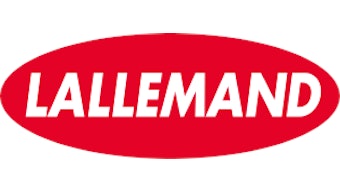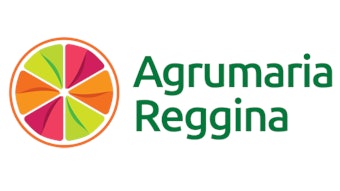
Scentium is the flavor division of Iberchem and a Croda brand. The company saw impressive growth in 2024, including expansion of its production facilities, new offices and increased laboratory space. These improvements have allowed their developers to continue to meet consumer demand for better tasting, more nutritious food.
General manager José Manuel Mateos and global sales director Manuel García expanded on how the company has focused its efforts on new technologies and playful flavors to make formulations that continue to delight consumers.
Scentium
Murcia, Spain
2024 Sales: € 338 million
Can you give a brief overview of some key highlights of milestones the company reached over the last 12 months?
Last year proved to be an excellent year, with an 18% growth in turnover, mainly José Manuel Mateos, general manager, ScentiumCourtesy of Scentium
José Manuel Mateos, general manager, ScentiumCourtesy of Scentium
2024 was also proof that we moved successfully from a diversified, opportunity hunting based approach, to a more structured and specialized line of action. The outcome of our winning formula was, for example, an extended collaboration with a turn-key solution provider and with a partner in juice and extract-based concentrates, which permitted us to complete our offering for carbonated, still and functional soft drinks. Our depth of knowledge, especially in our areas of strength, was appreciated by our customers, to whom we are as devoted as ever.
Another highlight is the expansion of our production facilities at our site in Alhama de Murcia, Spain, with additional manufacturing capacity of flavors in powder format of 4.000 MT, and an increased capacity by 40% in liquid format. New offices with a surface area of 550 m2 for our Export, Logistics, Safety, Health & Environment, and Quality Assurance personnel were finalized, while our laboratory expansion project including dedicated pilot plants for beverages and dairy, confectionery and bakery, and savory applications at our headquarters are coming next. Meanwhile, we doubled our laboratory space and technical resources in Dubai.
How is your company adapting to global changes in dietary habits and flavor expectations?
We have adapted our flavors to the local palate and taste preferences for years, Manuel García, global sales director, deputy general manager, ScentiumCourtesy of Scentium
Manuel García, global sales director, deputy general manager, ScentiumCourtesy of Scentium
Health concerns and regulations are shaping a low or no sugar soft drink landscape in, for instance, countries as diverse as Spain and Mexico. Changes in final product recipes require tailored solutions, so we have run hundreds of trials and pushed our creative boundaries to guarantee our customer’s satisfaction, as there isn’t a one-fits-all remedy.
What are some of the current obstacles the flavor industry is facing in terms of sourcing? We have seen an influx in citrus oil replacers as well as cocoa, can you share how the market is adjusting to these technologies?
Though biotechnology, like precision fermentation, is playing a vital role in reducing the high cost of sourcing and, in part, the scarcity of some traditional essential oils and botanical extracts in food and beverage products, the flavor industry is challenged as ingredients like vanilla, cocoa and orange are subject to fluctuating supply, mainly due to climate change, crop diseases, and other agricultural or geopolitical constraints.
Using cocoa as an example, low wages and incomes - despite many initiatives trying to amend this in the past – form part of the root causes for declining crops in the main producing areas, as farmers have searched for more lucrative alternatives, like (illegal) gold mining.
The current shortage of cocoa was predicted at least a decade ago by the main multinationals operating in the supply chain and processing business, as the forecasted demand for the years to come was notably higher than the number of areas dedicated to new plantations. Projects based on natural alternatives like carob or cocoa shell were developed but not exploited as cocoa prices remained low for many years.
Cocoa shell is in our opinion an ingredient to watch. This fiber-rich ingredient, currently used in the feed, tobacco and compost industries, can be upcycled into a sterilized powder format and be repurposed as a food grade raw material into confectionery, bakery, dairy and dairy-alternative products, due to its slight bitter and delicate cocoa flavor, as well as its color being difficult to distinguish from cocoa powder.
We have developed cocoa replacers, with or without cocoa shell powder, delivering the same taste with less cocoa. These replacers are enabled by a functional matrix that controls the release of the flavoring components, providing a more true-to-chocolate taste experience.
What key consumer trends do you believe will shape the future of flavor preferences and development?
Reaching out to the younger generations with appealing new ideas, while evoking nostalgia amongst adults and the elderly, is certainly a trend to consider. As such, the food and beverage industry has created branded snacks, soft drinks and candies with flavors associated with video games, as well as limited editions with video games personae to engage the ‘gaming generation’.
Products that are both playful and challenging the mainstream, like bubble-tea, with liquid filled bubbles of contrasting textures and varying blends of taste and smell, sour candies with bold straight-in-your-face flavors, and hot & spicy Asian-inspired snacks are elements of the thrill- and excitement-seeking culture of the GenZ consumer.
At the latest FI Asia, Food Tech Summit, Gulfood Manufacturing and ProSweets ISM trade shows, organized in Jakarta, Mexico City, Dubai and Cologne respectively, SCENTIUM exhibited our own ‘Game On’ concept and witnessed resounding attention, resulting in follow-up innovation sessions at some of our largest customers.









